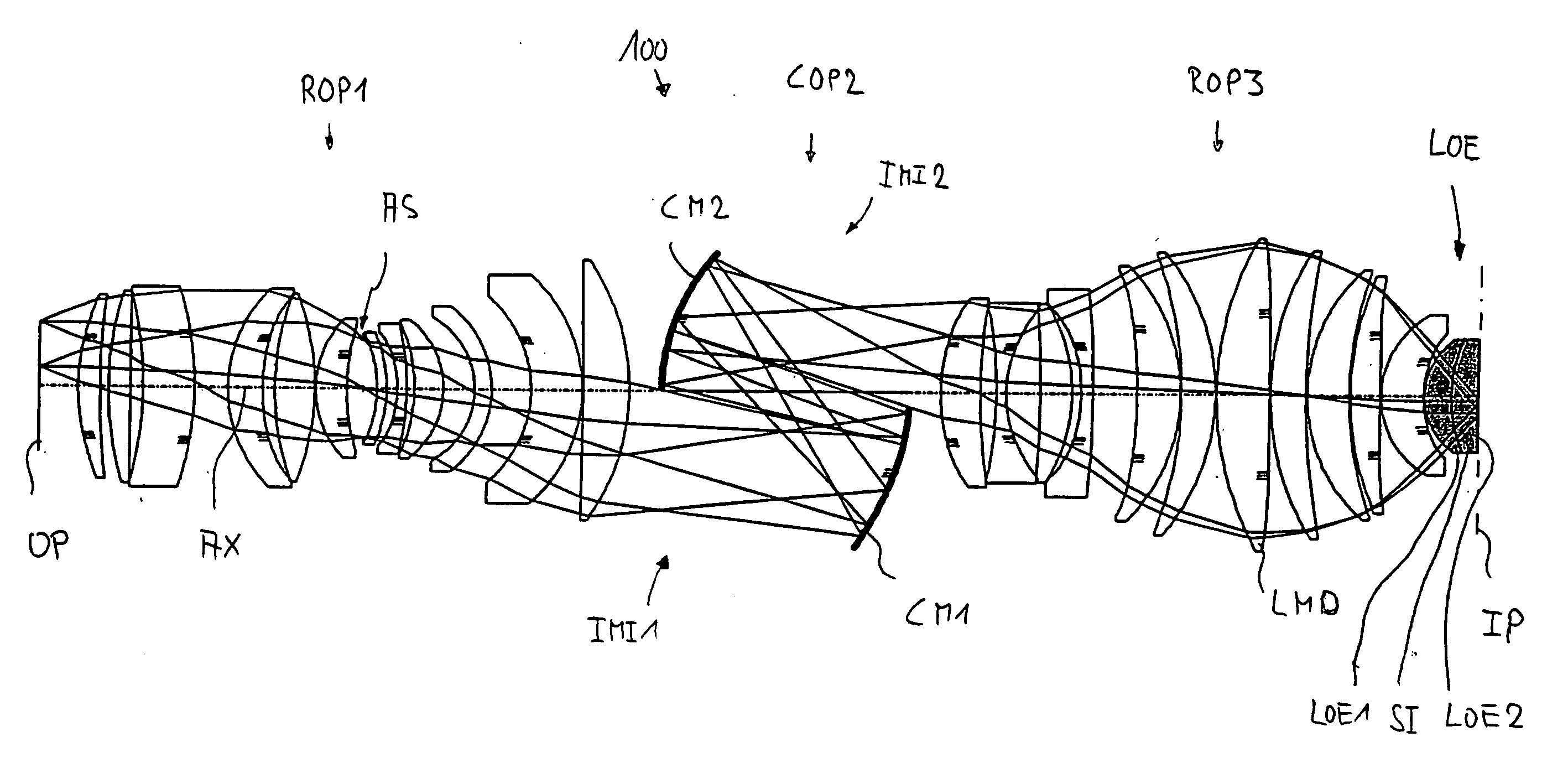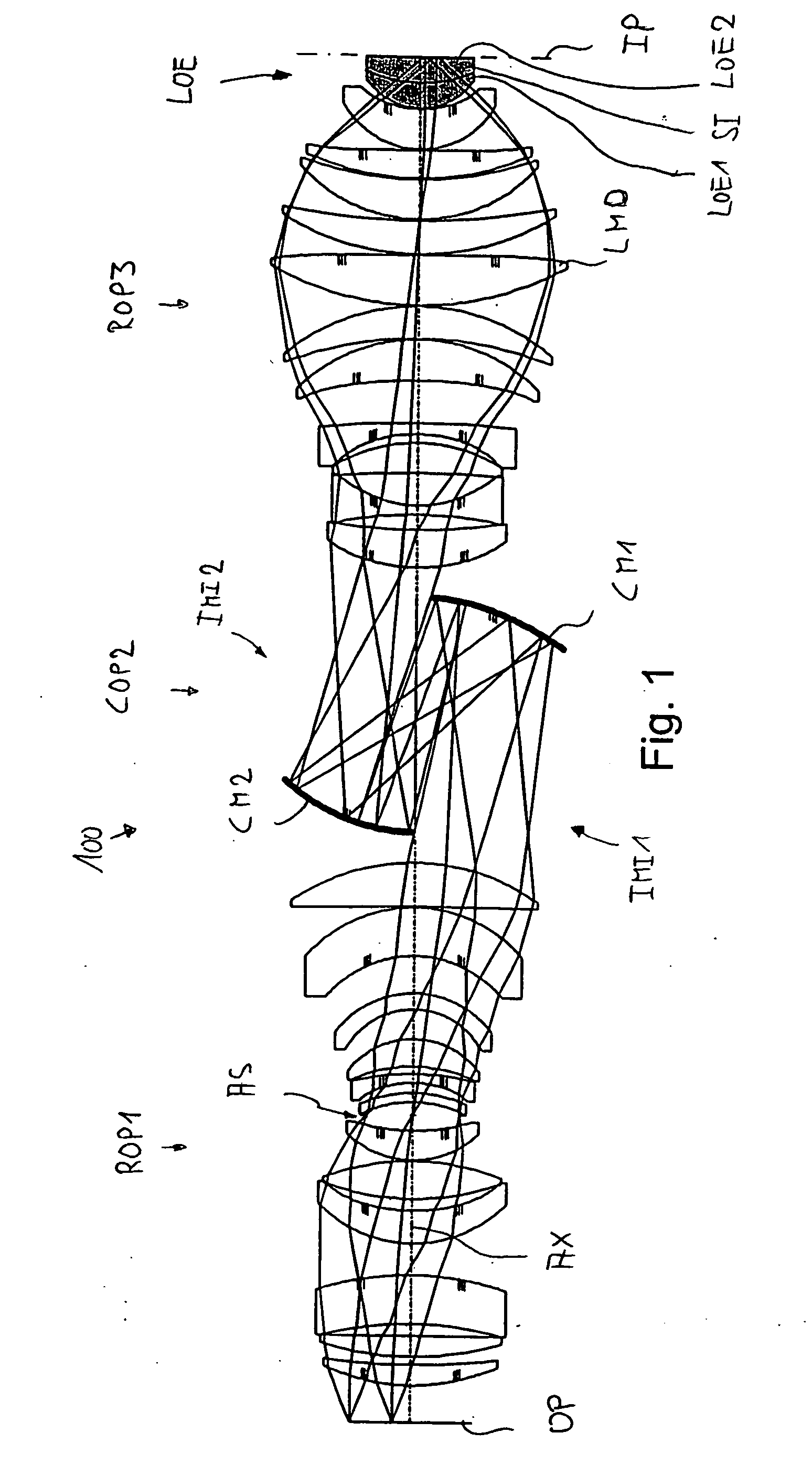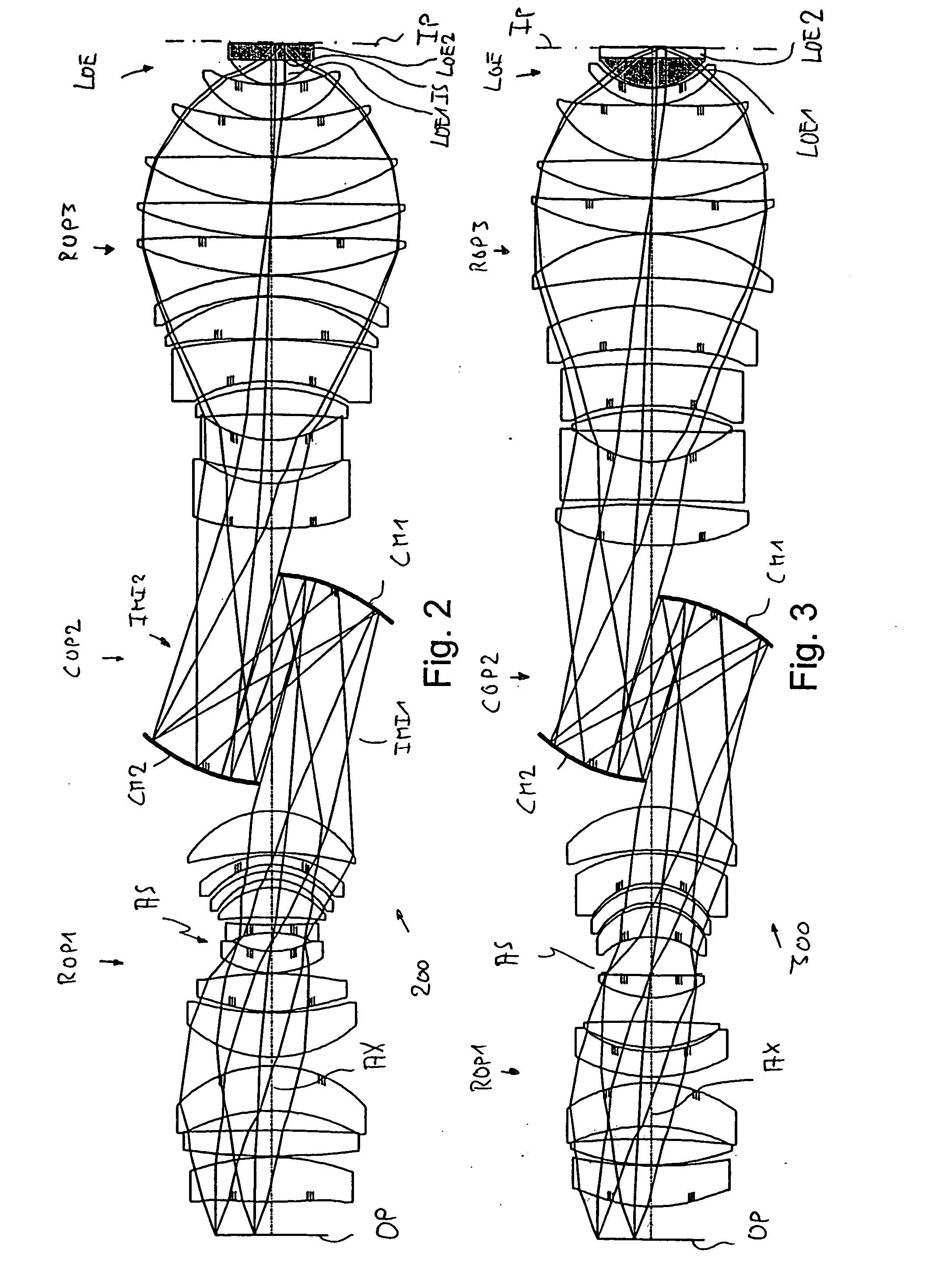Projection objective having a high aperture and a planar end surface
a projection objective and high aperture technology, applied in the field of projection objects, can solve the problem of material not being transparent at 193 nm, and achieve the effect of moderate siz
- Summary
- Abstract
- Description
- Claims
- Application Information
AI Technical Summary
Benefits of technology
Problems solved by technology
Method used
Image
Examples
first embodiment
[0040]FIG. 1 shows a catadioptric projection objective 100 according to the invention designed for ca. 193 nm UV working wavelength. It is designed to project an image of a pattern on a reticle (or mask) arranged in the object plane OP into the image plane IP on a reduced scale, for example, 4:1, while creating exactly two real intermediate images IMI1 and IMI2. A first refractive objective part ROP1 is designed for imaging the pattern in the object plane into the first intermediate image IMI1, a second, catoptric (purely reflective) objective part COP2 images the first intermediate image IMI1 into the second intermediate image IMI2 at a magnification close to 1:1, and a third, refractive objective part ROP3 images the second intermediate image IMI2 onto the image plane IP with a strong reduction ratio. The second objective part COP2 comprises a first concave mirror CM1 having the concave mirror surface facing the object side, and a second concave mirror CM2 having the concave mirro...
embodiment 3
[0057] In these cases, the NA is limited by the refractive index of the quartz glass. However, by comparison with a design having a last lens made from pure quartz glass the result upstream of the last lens is smaller beam angles and therefore also smaller diameters of the overall objective and lower sensitivities (interference susceptibilities to manufacturing tolerances) of the last lens element. In embodiment 3, at 135 mm the maximum lens diameter is now approximately 186 times the numerical aperture.
[0058] Of course, the present invention can also be used for objectives of low numerical aperture, in order to reduce substantially the diameter of previous projection objectives. This advantageously affects the price of the projection objective, since the amount of material can be reduced substantially.
[0059] The exemplary fourth embodiment (FIG. 4) shows a lithography objective 400 for 193 nm with a monolithic last lens made of sapphire and water (nH2O=1.43) as immersion medium fo...
PUM
 Login to View More
Login to View More Abstract
Description
Claims
Application Information
 Login to View More
Login to View More - R&D
- Intellectual Property
- Life Sciences
- Materials
- Tech Scout
- Unparalleled Data Quality
- Higher Quality Content
- 60% Fewer Hallucinations
Browse by: Latest US Patents, China's latest patents, Technical Efficacy Thesaurus, Application Domain, Technology Topic, Popular Technical Reports.
© 2025 PatSnap. All rights reserved.Legal|Privacy policy|Modern Slavery Act Transparency Statement|Sitemap|About US| Contact US: help@patsnap.com



